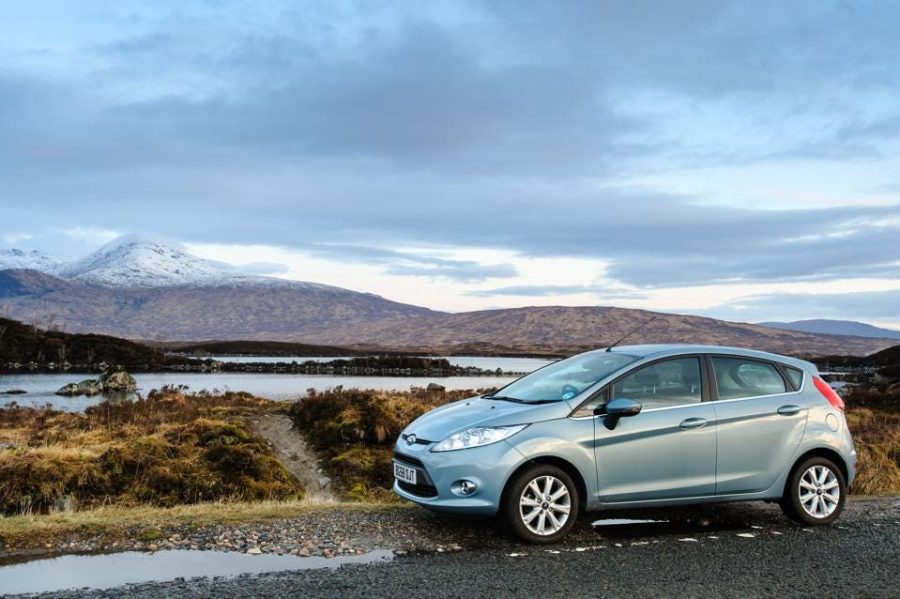Ford Europe is pinning its long-term future on an all-electric policy as it cuts capacity and jobs while ending production of traditional high-volume, low profit-margin combustion engine vehicles. Analysts see an uphill struggle ahead.
Some experts wonder if there will have to be another round of job cuts. Ford Europe says profit is now more important than sales volume. Like Forbes said.
Analysts said the company made a strategic mistake by coming late to electric vehicles. Market share has been slowly sliding and in 2022 was 4.6% in Europe compared with 8% in 2011, according to Germany’s Center of Automotive Management (CAM). The company is in danger of entering another downward spiral as its products fail to appeal to local needs.
At the same time, competition from Korea is intensifying, while China is beginning a major product offensive this year, mainly based on electric vehicles.
Ford Motor investors might be wishing it had pulled out of Europe entirely, as GM Europe did in 2017 after its Opel-Vauxhall brands lost about $20 billion this century amid persistent promises that they would start to make money, but always next year.
Ford Europe has meandered from small loss to small profit. In 2022’s 3rd quarter, Ford Europe earned $256 million compared with a loss in the same quarter the previous year.
Ford made swingeing cuts in 2019, axing 12,000 jobs in Europe and shutting more factories. This time the expectation from German unions is job losses of about 3,200 mostly in product development, mainly in Germany but also in Britain.
The Ford Motor Co subsidiary’s upcoming round of electric vehicles will be the result of buying technology from Volkswagen, but later in the decade it plans to switch to its own designs.
This all a far cry from its position at the turn of the century, when Ford Europe was one of the big 6 automotive manufacturers in Europe, which also included Volkswagen, Renault, GM Europe’s Opel/Vauxhall, now sold out to Stellantis, Peugeot-Citroen (now Stellantis) and Fiat (Stellantis).
Ford Europe plans to drop the high-selling/low-margin Focus in 2025, the Fiesta this year, the Ecosport in 2024 and it ended the Mondeo last year, according to French auto consultancy Inovev.
“These combustion engine models have been widely successful for several decades. But today, times have changed and Ford is practically starting from scratch. The future is 100% electric SUVs and so next Ford models in Europe will be mostly 100% electric SUVs,” Inovev said.
Inovev said two new electric models will be made in Cologne, based on VW technology, totalling 200,000 by 2026. More new electric models later will be based on Ford technology.
“Ford of Europe wants to become a 100% electric manufacturer by 2030 and we expect it to produce 615,000 vehicles in 2030, compared with 912,000 in 2022,” Inovev said in a report.
Inovev thinks Ford will find it hard to maintain even its reduced market share because the shift to electric vehicles will mean big uncertainties and this section of the market will face stiff competition from Korean and Chinese brands.
“Europe is not necessarily the priority of Ford, even if it is the second biggest market for the group. The U.S. has always been the priority for Ford, with its more profitable pick-ups and SUVs. Today, the U.S. market represents 60% of Ford group sales. Ford is now an American group focussed on the U.S., and not a global outfit like VW, Toyota, or Stellantis,” Inovev vice-president Jamel Taganza said.
CAM director Professor Stefan Bratzel agrees, saying Ford Europe has to be more aware of European requirements which are different from Americans, with the size of the cars and interiors. It needs to stamp its own personality on its vehicles, and that won’t be helped by using VW designs for its initial electric cars.
This doesn’t seem to bother Ford. In fact the reverse seems to be the case as it plans to exploit what it called its new marketing slogan “Adventurous Spirit, which it says stands for the American values of freedom, outdoors and adventure.
“We are seizing the opportunity to completely reposition ourselves. Our future models are more American, and from 2030 they will be all electric,” Ford’s marketing chief in Germany Christian Weingaertner told Automotive News Europe in December. Weingaertner also said profit is now more important to Ford Europe than the volume of sales.
Meanwhile Bratzel doesn’t think this will work.
“Ford Europe has to be careful not to get into another downward spiral in Europe if the development of vehicles is made in the USA in the future. Customer wishes in Europe are then quickly forgotten. Ford Europe has made major strategic mistakes as it positioned itself more and more as a low-cost player focussing more and more on lower segments. That was a big problem in a high-cost country like Germany. And they had not seen that electric mobility was coming and there are currently hardly any adequate vehicles on offer. They’ve taken the (interim) VW electric platform (basic engineering) but need to differentiate in the future to earn more money,” Bratzel said.
Where will Ford Europe be in 2025 and 2030?
“They have to move upmarket by bringing in new models that have a competitive edge, that have something the others don’t, and I don’t see that at the moment. Meanwhile, competition will get tougher. By 2026 or 2027 and hopefully not later Ford will be competitive, but if not by then, watch out,” Bratzel said.
Will Ford Europe do a GM and pull out of Europe?
“If they lose more and more volume there is a chance they might pull out but it’s more difficult for them. GM left brands like Opel and Vauxhall behind, that was relatively easy. But because the brand is Ford, that would be more difficult,” Bratzel said.
Investment bank UBS said Ford is pulling out of the low-margin volume sector to make its European business sustainably profitable. The current round of cuts might not be the last.
“It seems the company is undergoing strategic transitions for their European business, and we expect more clarity from the upcoming earnings call. Ford targets to become all-electric for their passenger car lineup in Europe by 2030 and two thirds of commercial van sales to be all-electric or PHEV (plugin hybrid electric vehicle) by the same date,” UBS said in a report.
“In our view, this transition in combination with increasing price and margin pressure requires further restructuring, especially for the sub-scale passenger car business in Europe,” UBS said.
Inovev’s Taganza reckons Ford will probably remain in Europe but as a relatively minor player like Honda, which now has a market share in Europe of less than 1%. In 2022 Honda’s U.S. market share was 6.7%.
Would Ford pull out of Europe?
Taganza agrees that from an image point of view it would be difficult.
“I don’t know but it looks like Ford is just following the flow of the market and is not proactive. I think that it will be the market which will decide what will be future of Ford in Europe,” Taganza said.
Ford of Europe was asked to comment and made this statement.
“Ford remains committed and is currently accelerating its plans to build an all-electric portfolio of vehicles in Europe. By 2030, all new passenger cars sold by Ford in the EU will be electric, and by 2035 all new Ford Pro commercial vehicles will be electric,”
“This transformation requires significant change in the way we develop, build and sell Ford vehicles, and will impact our organizational structure, talent and skills needed in the future. More details will be shared once our plans are final and we have informed our employees first.”





















